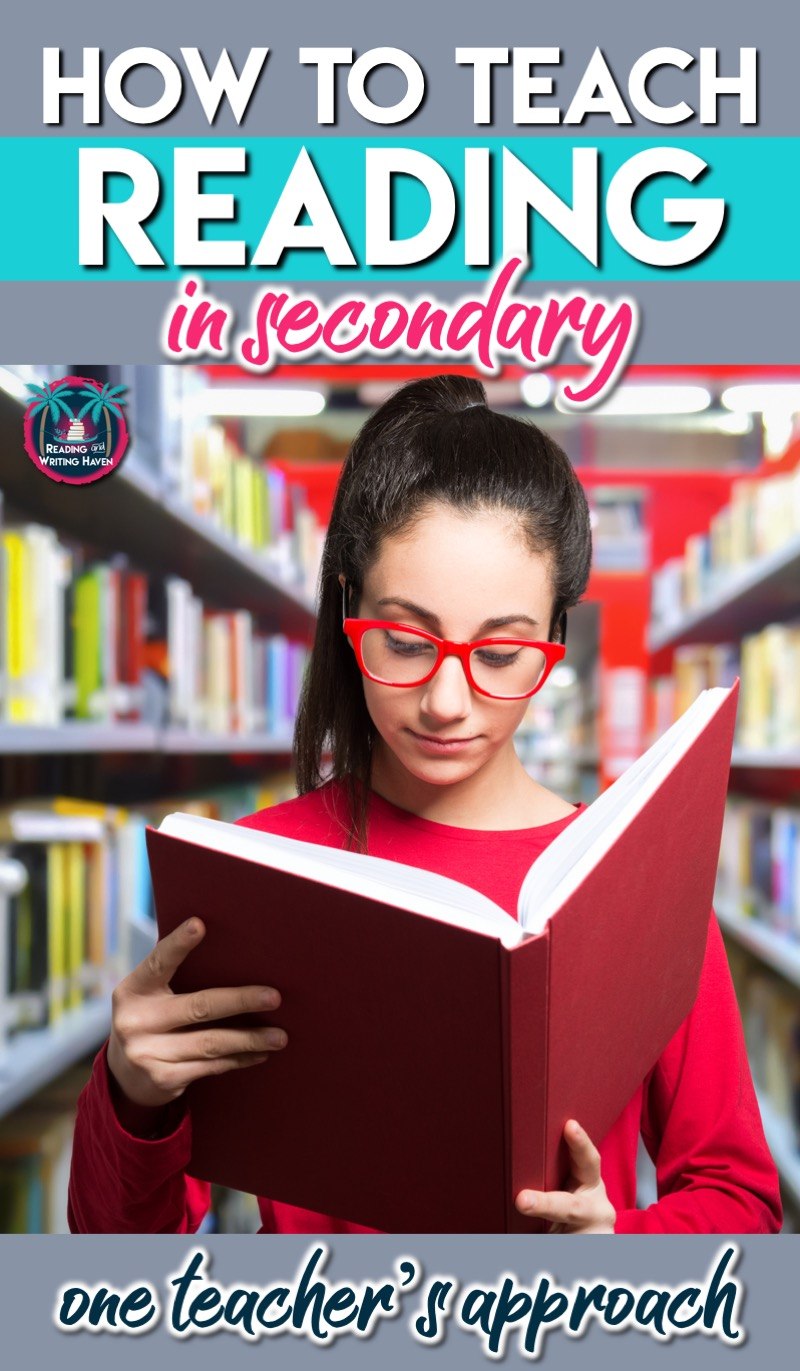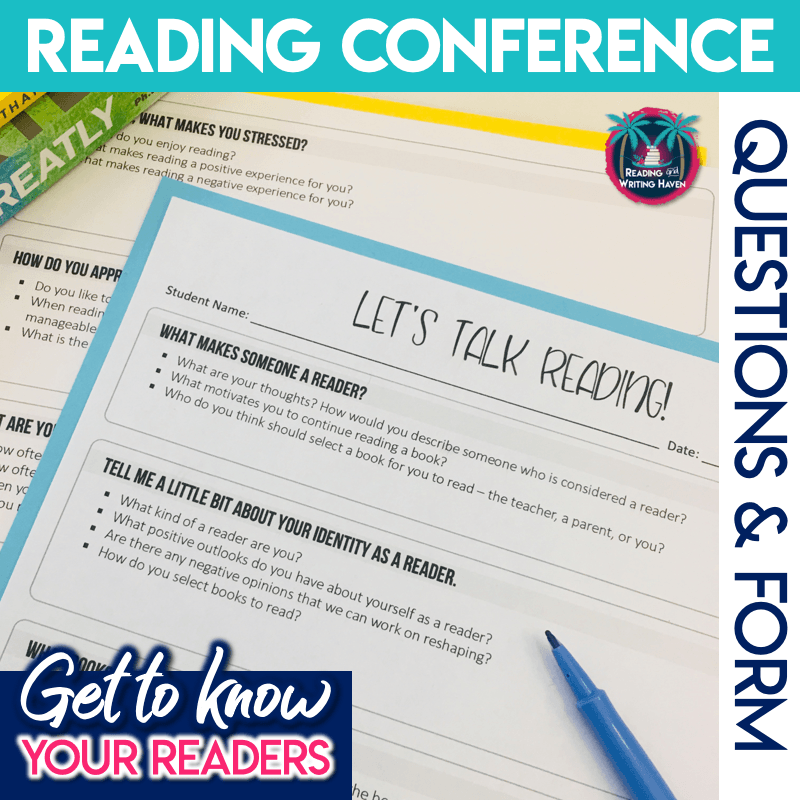How to Teach Reading: Step One – Getting to Know Your Readers
Searching for ways to teach reading meaningfully in secondary? Welcome! This post – Getting to Know Your Readers – is the first in a series about how to teach reading with older students.
Reading instruction is one of the most important, yet challenging, parts of a teacher’s job. Readers come to us with a myriad of readiness levels, and we try to reach them all.
As I’ve participated in conversations about teaching reading, both inside and outside of my graduate reading course work, I’ve noticed that common questions surface. How can I help students understand the texts we are reading? If students tell me they don’t like reading, how do I respond? Is it possible to make time for independent reading and conferring when I only have a 45 minute English class period? What reading strategies do you teach? How do you sequence reading instruction? How can I differentiate reading in middle or high school?
I want to be part of the discussion, to share what I’ve found to be successful. However, that doesn’t make what I do the Holy Grail of teaching reading, and my techniques are always evolving as I learn more. In this series, you’ll find my general approach. Take what you like, but mostly, use these ideas to reflect on your own students, your own research, and your own philosophy about reading instruction.
Since this is a series, let’s just begin by talking about step one: Getting to know your readers. How can we do this? Many people use reading inventories. That’s fine. I do, too! But, we shouldn’t stop there. In addition, try…
1. READING CONVERSATIONS
Getting to know your readers takes time. Sometimes we have to go slow to go fast. Conversations are the foundation of relationships, and regular conversations with students are critical. What can we learn about our students during this time? What questions can we ask? Here are a couple examples…
How would you describe your reading environment at home?
When you’re at home, what is your favorite spot to read? What else is happening in the room when you read? Do you normally read right before bed? right after school? on Saturdays? You may find some students will tell you they don’t read at home. I cross-reference students’ responses with their parents’ survey answers to fill any gaps.
 As a reader, what makes you stressed?
As a reader, what makes you stressed?
I ask this question because….well…I want to avoid these things if I can. When I first started teaching, I heard answers like Accelerated Reader or really hard tests. Those are topics for a later post. Sure, some answers are not overly helpful (i.e. – I don’t have time for reading. As long as you don’t make me do it, I won’t be stressed.)
Still, there is often a vein of truth in every criticism. Listening to students talk about what stresses them out is what inspired me to start my classroom book clubs. They told me they hated reading! The only school-related reading experiences they could remember were to read for a test or to complete a major project. Upon reflection, I realized that I, too, would be stressed if I felt I could never read for pleasure.
Tracking conversations with students…
As you converse, take notes! The information you learn from these discussions will be a tool you can reflect on later in the school year as you conference with students, parents, other teachers, and evaluators. You can find my editable notes page for recording these conversations with students here. You’ll find it has additional questions and is a convenient way to store information for future reference.
2. INFORMAL ASSESSMENTS
Getting to know your readers is multi-faceted and ongoing. What else can we do?
Tiered texts…
Try giving students an informal assessment to determine their approximate readiness level. Use a site like CommonLit to find fiction and nonfiction texts at different lexiles. Have students answer the Common Core aligned questions to help determine which text is the best fit for them.
This technique is not foolproof, and when talking about lexiles and levels, we should remember it’s just a piece of the puzzle. Readers should not feel defined by them. Instead, they should feel empowered to know how to select just right texts that will provide them with high-success independent reading time.
Retellings…
Another idea? Use retellings. Give students a text to read, and, individually, ask them to tell you everything they remember about that text. To clarify, you can follow up with prompting questions to get a better idea of whether students forgot to tell you important information or they didn’t understand the text.
Generally, fiction retellings include characters, setting, plot, problem, and theme. Nonfiction retellings, on the other hand, focus on main idea and supporting details. Readers may also comment on text structure or author’s craft.
Comprehension prompts…
We can easily learn a lot about students when conferring with them about whole class or independent reads. Use comprehension resources like this and scaffolded ones like this to liven up discussions.
Listen to students talk about what they have read. Or, listen to them read out loud. Take note of any strengths they have or areas for growth, and refer back to those notes later when setting goals with them.
For instance, this year, I was working with a small group of readers. During our jotting activity about theme, I noticed many of them were choosing themes that didn’t extend beyond the story. This insight helped me to pinpoint the next mini lesson that was needed.
3. OBSERVATIONS
When it comes to getting to know our readers, some of the most valuable information we can gather comes from watching them.
As they read, are they…
- smiling, furrowing eyebrows, or showing other emotional connections?
- engaged? continually turning the pages?
- asking to use the restroom, fidgeting, or losing focus?
- getting started right away without prompting?
- able to focus for long periods of time?
As you listen to them talk about what they are reading, are students…
- excited or bored?
- confident or confused?
- detailed or vague?
When we ask students to read out loud to us…
- do they stumble over words and sentences?
- are they uncertain of a lot of the vocabulary?
- are they comprehending what they read?
Also, are students more focused on talking about plot, setting, characters, conflict, theme, or main ideas? Understanding their current strengths and comfort zones opens up doors for setting new goals.
WHY DOES ALL OF THIS MATTER?
The more time we spend in conversation with our students about reading, the better we will know how to help them. In order to be able to connect with students, to motivate them, and to differentiate for them, we need to take time to know them.
Like anything else, teaching reading is always going to be a reflective process. What I believe is effective now is different than when I first began teaching over a decade ago. When we know better, we do better. As a new teacher, I was lost. After I pursued graduate coursework related to curriculum and reading, I began to feel more confident. Every teacher has to do what works best for his or her context. Consider the needs of your students. Is there anything you can tweak or something new to try to better meet their needs?
Getting to know your readers is the first priority, but there are so many other factors to teaching reading! Here is the second post in this series: How to Decide What Reading Lessons to Teach.

 As a reader, what makes you stressed?
As a reader, what makes you stressed?